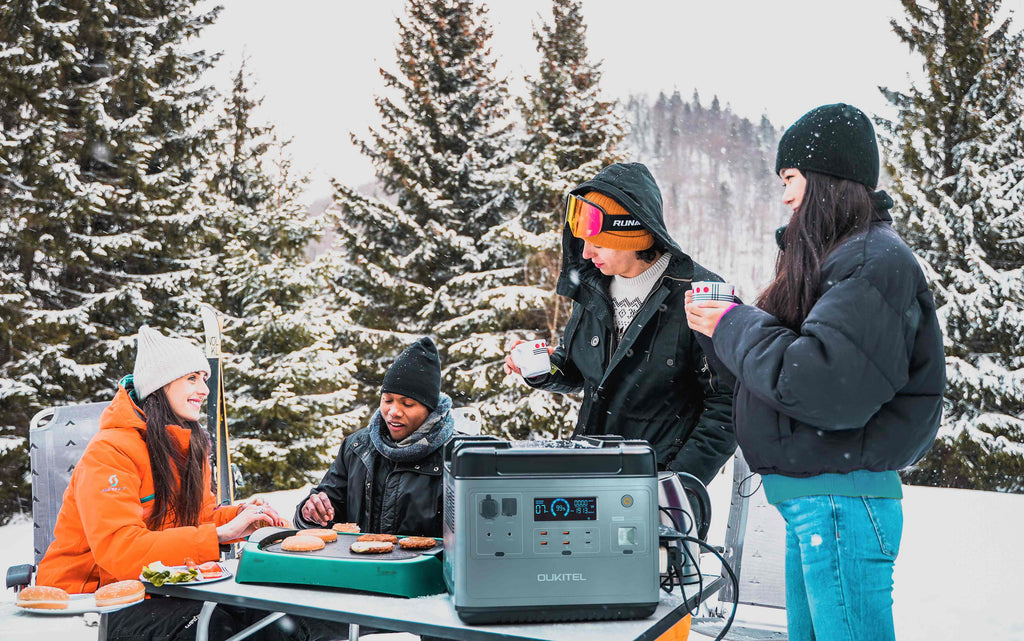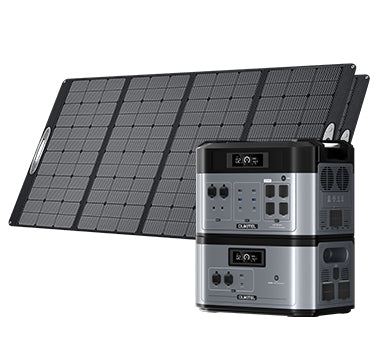Portable Power Station Cooking: Watts, Runtime & Safe Quick Meals Off-Grid
In an era defined by bustling schedules and the need for mobility, we often find ourselves longing for swift, convenient solutions for meal preparation. Have you ever thought about stirring a pot of hot, savory pasta while surrounded by the tranquility of nature on a camping trip, or sipping your home-brewed coffee in the middle of a tailgate party? It may seem a bit far-fetched, but this is where the compact, innovative, and versatile solution of portable power stations comes into play. Perfectly aligning with short run times of quick-cooking tasks, these handy devices promise a taste of home, no matter where you are.
Is a portable power station Work for Fast Meal Prep?
Yes—you can cook off-grid with a portable power station, but keep it short and sized right. Quick tasks like boiling water, reheating in a microwave, or a brief skillet session work well if the appliance watts match your station’s AC output and the battery watt-hours are sufficient. The sections below give a simple formula, real runtime examples, and two model picks for safe, fast meals outdoors.
Why Portable Power Stations Work for Fast Meal Prep?

Portable power stations are a game-changer for modern, swift cooking. They are compact and mobile, making them perfect for outdoor excursions or areas where standard electricity is unavailable. More significantly, they are optimized to efficiently power smaller appliances, precisely those required for quick meal prep.
To illustrate, most portable power stations are designed with battery capacities ranging from 150Wh to 1000Wh. The smaller-capacity models can efficiently operate appliances like coffee makers, toasters, or electric grills, each typically consuming between 150-300 watts. The power station's capacity, coupled with the short operational time of these appliances (usually not more than an hour), aligns perfectly with quick meal prep, reducing energy drain and ensuring efficient usage.
Sizing quick math: usable energy ≈ Battery Wh × 0.85 (system loss).
Runtime (h) ≈ Usable Wh ÷ Appliance W.
Headroom rule: keep continuous load ≤ 80% of the inverter’s rating; check surge for induction or motorized loads.
Moreover, the adaptability of portable power stations is another crucial factor. They come equipped with different types of outlets - AC, DC, and USB, ensuring that a variety of cooking appliances can be powered. This versatility is what makes these stations a reliable power supply, whether you're camping in the wilderness, tailgating at a sports event, or working on a remote construction site.
Quick Cooking Tasks Suited to Portable Power
Portable power stations unlock a broad range of cooking tasks, all aligning with their energy capacities and mobile nature. Consider the everyday task of boiling water, which forms the basis of several meals like pasta, rice, and oatmeal, or beverages like tea or coffee. A standard electric kettle consumes around 1500 watts but operates for less than 10 minutes to boil water. This short operation time makes it compatible with higher-capacity portable power stations.
Reheating leftovers or ready-made meals is another task where these stations shine. A microwave, for instance, consumes high power but runs for short durations. Some models of portable power stations can support small microwaves operating up to 5 minutes, perfect for reheating tasks.
Moreover, a single induction burner, which consumes around 1800 watts, can be utilized for brief tasks like frying eggs or making toast, provided your power station has a corresponding or higher capacity.
|
Task / Appliance |
Typical Power |
Typical Time |
Energy per Cycle |
P1000 Plus Cycles |
P2001 Plus Cycles |
Recommended Model |
|
Electric kettle (boil water) |
1500W |
5 min |
≈125Wh |
6–7 cycles |
13–14 cycles |
P2001 Plus (meets 80% headroom; P1000 can run it but not within the 80% safety margin) |
|
Microwave reheat (compact) |
1000W |
3 min |
≈50Wh |
≈17 cycles |
≈35 cycles |
P1000 / P2001 |
|
Induction cooktop, medium heat (quick fry) |
1200W |
10 min |
≈200Wh |
≈4 cycles |
≈9 cycles |
P2001 Plus (check surge) / P1000 for brief use |
|
Toaster |
900W |
3 min |
≈45Wh |
≈19 cycles |
≈39 cycles |
P1000 / P2001 |
|
Small rice cooker |
400W |
30 min |
≈200Wh |
≈4 pots |
≈9 pots |
P1000 / P2001 |
|
Blender / smoothie |
500W |
2 min |
≈17Wh |
≈50+ cycles |
≈100+ cycles |
P1000 / P2001 |
Tips for Using Portable Power Safely for Cooking
Though portable power stations offer vast convenience, safety remains paramount. Begin with appliances of lower wattage (around 500-1000W), such as a blender or a slow cooker, to avoid overburdening your power station.
It's essential to understand your appliances' power consumption. A cooking appliance typically has its wattage printed on its base or in its manual. Ensure that the total wattage of all appliances connected does not exceed the power station's capacity. Overloading can trigger the station's safety protocols, leading to automatic shutdown or, in worst-case scenarios, a premature failure.
Lastly, always be alert for signs of strain or overheating in your power station, especially during prolonged use or while powering high-wattage appliances. A hot-to-touch surface, unusual noise, or sudden performance drop are indicators that your station may be under stress. Regular monitoring and quick response to these signs can ensure the longevity and safe usage of your portable power station.
You may also want to read: Portable Generator Safety Tips: Dos & Don'ts
Conclusion
Portable power stations excel at quick, high-impact cooking when sized correctly. For reheats and short skillet sessions, a 1kW-class unit like P1000 Plus is enough; for kettles or induction bursts, step up to P2001 Plus for safer headroom. Use the runtime math above to plan your meals and charge cycles.





































 Oukitel Flashlight
Oukitel Flashlight Oukitel Solar
Extension Cable
Oukitel Solar
Extension Cable

















Leave a comment